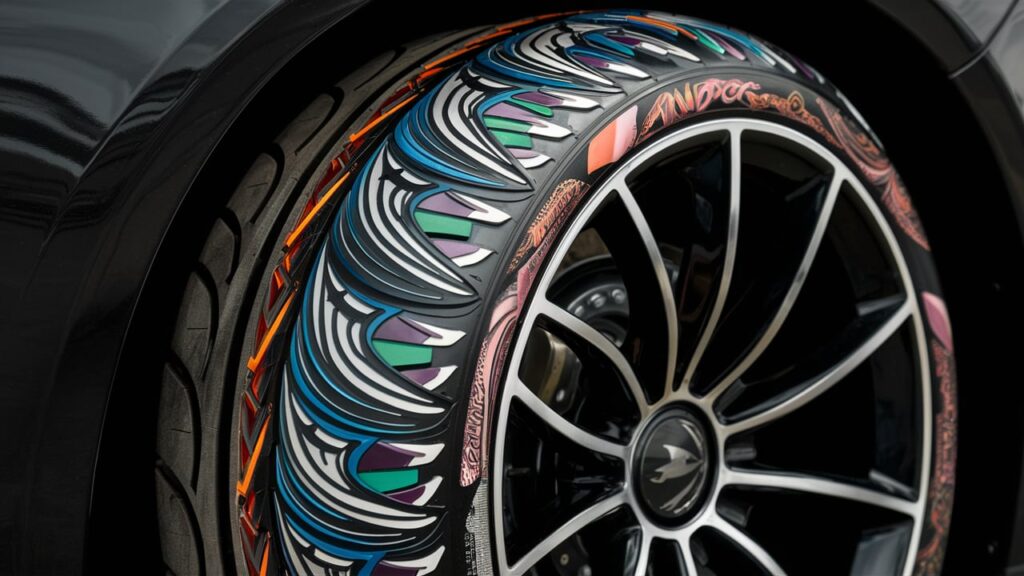Customizing your tires can transform your vehicle’s look and performance. It’s a way to express your style and enhance driving experience.
Recommended Best Tire Grooving Tools 2025
| Recommendation | Product |
| Best Overall | Julymoda Tire Grooving Tool |
| Popular Choice | ZAWAYINE Truck Tire Groover Tool |
| Best Value | Speedway Motors Tire Groover Kit |
| Best Budget | Speedway Motors 110 Volt Tire Grooving Iron Tool |
| Another Excellent Pick | VEVOR Mophorn Tire Grooving Tool |
Are you curious about how to make your car stand out? Customizing your tires is a great start. Not only can new tires improve your car’s appearance, but they can also boost its performance. From choosing the right type of tire to selecting unique designs, there are many options to consider.
Whether you’re looking for better grip, smoother rides, or a sportier look, this guide will help you navigate the choices. Get ready to learn how to pick, modify, and maintain tires that fit your needs and personality. Let’s dive into the world of tire customization!
Choosing The Right Tires
Choosing the right tires can significantly impact your vehicle’s performance. This section will help you understand the types of tires and how to select the right size.
Types Of Tires
There are several types of tires available. Each has its own purpose. Understanding these types helps in making an informed decision.
All-Season Tires: These tires are versatile. They work well in various weather conditions. They provide a balanced performance in wet, dry, and light snow.
Summer Tires: These tires perform best in warm weather. They offer superior handling and grip on dry and wet roads. Not suitable for cold or snowy conditions.
Winter Tires: Designed for cold weather and snowy conditions. These tires have a special tread pattern. They provide better traction on ice and snow.
All-Terrain Tires: These are for off-road driving. They have a rugged design. They can handle mud, rocks, and uneven surfaces.
Performance Tires: High-performance vehicles need these tires. They offer better handling and speed. Ideal for sports cars and high-speed driving.
Tire Sizes
Choosing the right tire size is crucial. It ensures the best performance and safety. The size of a tire is indicated on its sidewall.
A typical tire size might look like this: 205/55R16. The first number, 205, represents the tire width in millimeters. The second number, 55, is the aspect ratio. It indicates the height of the tire’s cross-section as a percentage of its width.
The letter R stands for Radial construction. Finally, 16 is the diameter of the wheel in inches. Make sure to choose a tire size that fits your vehicle’s specifications.
Using the wrong size can affect handling, fuel efficiency, and safety. Always consult your vehicle’s manual or a professional to ensure the right fit.
Understanding Tire Specifications
Customizing your tires can seem daunting. Understanding tire specifications helps make informed decisions. Knowledge of these specifications ensures you select the right tires for your needs. Let’s dive into the details.
Tread Patterns
Tread patterns affect your vehicle’s traction and handling. There are three main types: symmetrical, asymmetrical, and directional. Symmetrical patterns offer a smooth ride and long tread life. Asymmetrical patterns provide better grip and handling. Directional patterns are designed for wet conditions. Each pattern suits different driving conditions and preferences.
Load Ratings
Load ratings indicate the maximum weight a tire can support. This specification is crucial for safety. An overloaded tire can fail and cause accidents. Check your vehicle’s manual for the recommended load rating. Always choose tires that match or exceed this rating. This ensures your vehicle handles properly and stays safe on the road.
Customizing Tire Appearance
Customizing the appearance of your tires can give your vehicle a unique look. It’s a great way to express your style and make your car stand out. From sidewall designs to colored tires, there are many options to choose from. Let’s explore some popular choices.
Sidewall Designs
Sidewall designs can change the overall look of your tires. These designs can include various patterns, textures, or even logos.
- Raised Letters: Raised letters add a bold look to your tires. They often display the brand name or tire model.
- White Walls: White walls are a classic choice. They add a vintage touch to any vehicle.
- Textured Patterns: Textured patterns offer a modern and edgy look. They can include geometric shapes or artistic designs.
Colored Tires
Colored tires are a fun way to customize your vehicle. They add a splash of color and make your car more noticeable.
| Color | Effect |
|---|---|
| Red | Bold and sporty |
| Blue | Cool and calming |
| Green | Eco-friendly vibe |
Choose a color that complements your car’s body. You can even mix and match for a unique look.
Enhancing Performance
Customizing your tires can greatly improve your vehicle’s performance. Proper tire pressure and alignment are key factors. These adjustments can lead to better handling and fuel efficiency. Let’s explore how you can enhance your tire performance.
Tire Pressure
Maintaining the right tire pressure is essential. Under-inflated tires can wear out faster. They also reduce fuel efficiency. Over-inflated tires can lead to a harsh ride. They may also cause uneven tire wear. Check your tire pressure regularly. Use a reliable gauge. Follow the manufacturer’s recommendations. Proper tire pressure ensures a smooth and safe ride.
Tire Alignment
Tire alignment affects your car’s handling. Poor alignment can cause your vehicle to pull to one side. It can also cause uneven tire wear. Regular alignment checks can prevent these issues. Aligning your tires involves adjusting the angles. These angles affect how your tires contact the road. Proper alignment improves your vehicle’s stability. It also extends the life of your tires.
Seasonal Tire Adjustments
Seasonal tire adjustments are essential for a safe and smooth ride. The type of tire you use can impact your vehicle’s performance. It can also affect your safety on the road. Let’s explore the differences between winter tires and summer tires.
Winter Tires
Winter tires are designed for cold weather. They offer better traction on snow and ice. This is due to their unique tread patterns and rubber compounds.
Key Features of Winter Tires:
- Special Tread Design: Helps grip snow and ice.
- Soft Rubber: Stays flexible in cold temperatures.
- Deep Grooves: Channels snow and slush away from the tire.
Switch to winter tires when temperatures drop below 45°F. This ensures your vehicle remains safe and performs well.
Summer Tires
Summer tires are perfect for warm weather. They provide excellent grip on dry and wet roads. These tires are made from a harder rubber compound.
Key Features of Summer Tires:
- Shallow Tread Depth: Increases contact with the road.
- Hard Rubber: Enhances durability and performance in warm weather.
- Wide Grooves: Efficiently channel water to prevent hydroplaning.
Use summer tires when temperatures consistently stay above 45°F. This keeps your vehicle handling at its best.
Maintaining Custom Tires
Maintaining custom tires is vital for their longevity and performance. Regular care ensures safety and enhances your driving experience. Custom tires require more attention than standard ones. Let’s dive into the key aspects of maintaining them.
Regular Inspections
Inspect your tires regularly for any signs of wear and tear. Check the tread depth to ensure it’s within the safe range. Look for any cuts, punctures, or foreign objects. Examine the sidewalls for cracks or bulges. Regular inspections help in early detection of issues.
Tire Rotation
Tire rotation is essential for even wear. Rotate your tires every 6,000 to 8,000 miles. Follow the manufacturer’s recommended rotation pattern. This helps in maintaining balance and stability. Proper rotation extends the life of your custom tires.
Cost Considerations
Choosing the right tires for your vehicle involves several factors. One of the most important is cost. Understanding how much you are willing to spend can help you make an informed decision. Here are some cost considerations to keep in mind when customizing your tires.
Budget Tires
Budget tires are affordable and can save you money upfront. They are suitable for everyday driving. These tires offer basic performance and safety features. They are a good choice for city driving and short trips. Budget tires may not last as long as premium options. But they provide adequate performance for regular use.
Premium Tires
Premium tires come with a higher price tag. They offer superior performance and durability. These tires are made from high-quality materials. They provide better traction and handling. Premium tires are ideal for high-performance vehicles. They are also great for long-distance driving. Investing in premium tires can enhance your driving experience. They often come with extended warranties and support services.
Safety Tips
Customizing your tires can enhance your vehicle’s performance and appearance. But safety should always come first. This section provides essential safety tips to ensure your tire modifications are safe and reliable. Following these tips can help prevent accidents and costly repairs.
Proper Installation
Proper installation of custom tires is crucial for safety. Always consult a professional mechanic for installation. Ensure that the tires are balanced correctly. Misaligned tires can cause uneven wear and affect your vehicle’s handling.
Check the tire pressure regularly. Underinflated or overinflated tires can lead to blowouts. Refer to your vehicle’s manual for the correct pressure. Inspect the tires for any visible damage. Look for cracks, bulges, or foreign objects.
Emergency Repairs
Knowing how to handle tire emergencies is vital. Always keep a spare tire in your vehicle. Make sure you have a jack and a tire iron. Learn how to change a tire properly. Practice at home if necessary.
If you experience a blowout while driving, stay calm. Do not slam on the brakes. Steer the vehicle straight and slowly move to a safe location. Turn on your hazard lights to alert other drivers. Call for roadside assistance if needed.

Frequently Asked Questions
How To Customize Your Tires?
Customizing your tires involves selecting the right size, tread pattern, and sidewall design. You can also choose custom colors and finishes to match your vehicle’s aesthetics.
What Are The Benefits Of Custom Tires?
Custom tires can enhance vehicle performance, improve handling, and provide a unique look. They can also be tailored to specific driving conditions or preferences.
Can I Customize Tire Colors?
Yes, you can customize tire colors. Many manufacturers offer options for colored sidewalls or custom paint jobs to match your vehicle’s style.
How Much Does Tire Customization Cost?
Tire customization costs vary based on the options chosen. Basic customizations may start at $100, while more elaborate designs can cost several hundred dollars.
Conclusion
Customizing your tires enhances both style and performance. It’s a simple process. Follow this guide, and make your ride unique. Remember to prioritize safety and quality. Proper tire customization can boost your vehicle’s look and feel. So, explore your options and start customizing today.
Your car deserves a personal touch. Enjoy the ride!








